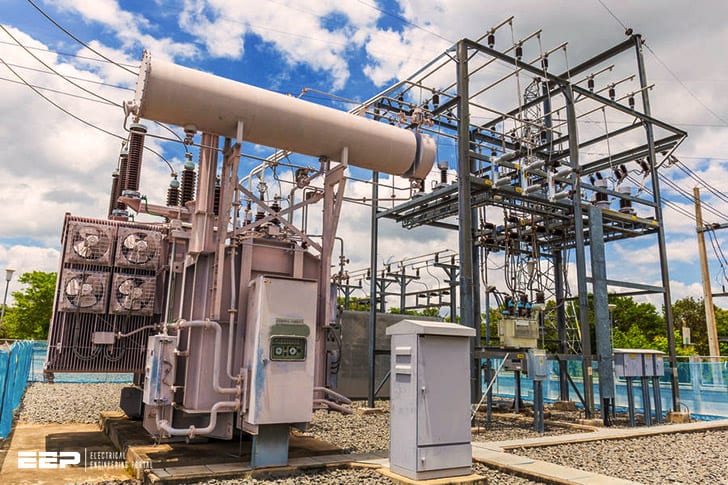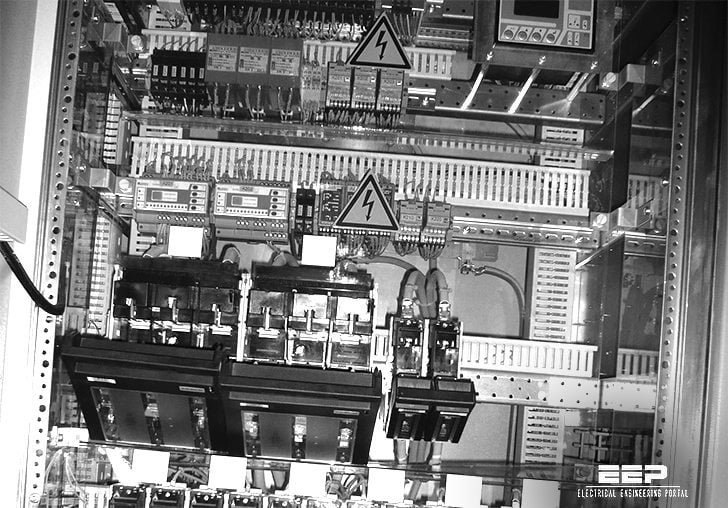A compact substation is a type of substation that uses smaller, modular equipment to provide the same functionality as a traditional substation. These substations are typically used in locations where space is limited, such as on a city block or in an underground tunnel. Compact substations can also be used to upgrade existing substations without needing to expand the footprint of the facility.
As the electrical grid continues to evolve, so too must the substations that support it. With space at a premium and the need for ever-greater efficiency, a new generation of compact substation design is emerging.
Though they may be small in size, compact substations pack a big punch.
By incorporating the latest advances in technology, they are able to provide all of the power needed to support an electrical grid while taking up far less space than traditional substations.
This is good news for utilities and other organizations that operate substations, as it means they can save on land costs and have more flexibility in where they locate their facilities. It also opens up new possibilities for siting substations in urban areas where space is at a premium.
The benefits of compact substation design don’t stop there. These cutting-edge facilities are also more efficient and easier to maintain than their larger counterparts. Thanks to their modular design, components can be quickly swapped out when necessary, making repairs and upgrades simpler and faster.
And because they use less energy overall, compact substations can help lower operating costs while reducing environmental impact.
Three phase 2500kVA compact substation details introduction
Compact Substation Pdf
The substation is the link between the high-voltage transmission grid and the low-voltage distribution grid. A substation transforms voltage from high to low, or the reverse, depending on its needs. The transformer is a key component of any substation.
This equipment lowers or raises the voltage of an alternating current (AC) by magnetically inducing a change in voltage across its winding coils.
Compact Substations are complete powerhouses that come equipped with everything you need to get your power system up and running – quickly, easily and affordably. These all-in-one substations offer many advantages over traditional larger stations, including:
• Less site disturbance and environmental impact
• More construction flexibility
• Smaller footprint for easier siting in constrained areas
Schneider Compact Substation
A Schneider Compact Substation is a type of electrical substation that is designed for smaller applications. These substations are typically used in commercial and industrial settings, as well as in some residential applications. Schneider’s compact substations are available in both indoor and outdoor models, and they can be customized to meet the specific needs of the customer.
Compact Substation Specification
A substation is a power system facility for switching or transforming electric power. Substations are typically located where the electricity is brought into a distribution system from generation plants, or where it is taken out of the system to be used by customers. They also play an important role in ensuring the quality of the electricity supply.
In order to meet customer needs and grid demands, substations must be designed to be as efficient as possible. This means that they must be able to switch between different voltage levels quickly and without interruption. Additionally, substations must have enough capacity to handle the amount of electricity that will flow through them.
Compact substations are becoming increasingly popular due to their smaller footprints and lower costs. However, it is important to make sure that compact substations meet all of the same specifications as larger ones. This includes things like:
-The ability to withstand extreme weather conditions
-The ability to accommodate future growth
-Minimizing visual impact
Compact Substation Abb
A substation is a critical part of the electrical power system. It is where the high-voltage transmission lines connect to the lower voltage distribution lines. The substation includes equipment to change the voltage levels and protect against faults.
Compact substations are becoming more popular as utilities strive to save space and money. These substations are typically used in urban areas where land is scarce and expensive. A compact substation can be built on a smaller footprint than a traditional substation, saving valuable land resources.
Utilities must carefully consider many factors when choosing between a traditional or compact substation. These include the type of equipment needed, the required clearances, access for maintenance, future expansion plans, and aesthetics. Compact substations often have a higher initial cost but offer significant benefits in terms of space savings and reduced maintenance costs over their lifetime.
Compact Substation Vs Conventional Substation
The debate of compact substation vs. conventional substation has been around for many years in the electrical industry. Each type of substation has its own advantages and disadvantages that must be considered when making a decision on which substation to use for a particular application. In this blog post, we will discuss the pros and cons of each type of substation so that you can make an informed decision on which one is right for your project.
Compact Substation:
Advantages:
-Smaller footprint than conventional substations
-Can be easily installed in urban areas where space is limited
-Lower construction costs due to smaller size and simpler design
-Weighted less than conventional substations, making them easier to transport and install
Disadvantages:
-Limited capacity compared to conventional substations (usually only up to 69 kV)
Compact Substation Sld
A compact substation is a type of power distribution substation where equipment is arranged in a way that saves space. This type of substation is typically used in densely populated areas where land is expensive, or when there is a need to minimize the visual impact of the substation.
There are many benefits to using a compact substation over a traditional one.
First, they take up less space, which can be important in urban areas where land is at a premium. Second, they can be easier to maintain and operate because all of the equipment is close together. Finally, compact substations tend to have a lower visual impact than traditional ones, making them more aesthetically pleasing.
If you’re considering using a compact substation for your power distribution needs, there are a few things you should keep in mind. First, make sure that your local codes and regulations allow for this type of substation. Second, work with an experienced engineer to ensure that the design meets your specific needs and requirements.
And third, be prepared for increased costs associated with this type of substation relative to traditional ones.
Introduction to Compact Substation Construction
A substation is a vital part of the electricity network. It plays an important role in providing a safe and reliable supply of electricity to homes and businesses. A substation transforms high-voltage electricity from the transmission system into lower voltages that are suitable for domestic and commercial use.
There are two types of substations: compact and non-compact. Non-compact substations are typically larger in size and require more land to accommodate all the equipment. Compact substations, on the other hand, are smaller in size and can be built in tighter spaces.
This makes them ideal for urban areas where land is scarce.
Compact substations offer many benefits over their non-compact counterparts. They are cheaper to build, take up less space, and cause less visual pollution.
In addition, they are easier to maintain because all the equipment is located within one enclosure.
If you’re looking to build a new substation or upgrade an existing one, then compact construction should be your first choice.

Credit: www.alibaba.com
What is Compact Substation?
Substations are an essential part of the electrical grid, providing a link between generating plants and distribution systems. A substation transforms voltage from high to low, or the reverse, and may also be used to change the frequency. The first commercial power station in the United States was built in 1882 near Niagara Falls.
Today, there are more than 565,000 substations nationwide that range in size from large facilities serving major metropolitan areas to small rural installations.
A compact substation is a type of substation that is smaller in physical size and has a limited number of devices installed. These types of substations are typically used for residential or light commercial applications where space is limited.
Compact substations can be either indoor or outdoor units and usually come equipped with one or two transformers, switchgear, metering equipment, and other necessary devices.
What is the Size of Compact Substation?
A compact substation is a power substation that takes up less space than a traditional one. They are typically used in urban areas where land is limited. Compact substations can be as small as 10 feet by 10 feet, but their size can vary depending on the voltage and capacity requirements.
What are Components of Compact Substation?
A compact substation is a type of power substation that is designed to occupy a smaller footprint than traditional substations. They are often used in urban areas where space is limited, or in locations where aesthetic considerations are important.
Compact substations typically include all of the same components as a traditional substation, including transformers, circuit breakers, voltage regulators, and busbars.
However, they are often configured differently in order to save space. For example, the transformers may be stacked on top of each other instead of being placed side by side.
In addition to their smaller size, compact substations also have some other advantages over traditional substations.
They can be easier and less expensive to construct since they require less land. They are also typically more resistant to damage from flooding or other natural disasters.
What are the Three Types of Substations?
Substations come in a variety of shapes and sizes, but all serve the same purpose: to step down the voltage from the transmission line to a level that can be used by consumers. There are three main types of substations: air-insulated, gas-insulated, and liquid-filled.
Air-insulated substations (AIS) are the most common type of substation.
An AIS uses air as an insulator between live electrical components. AISs are typically less expensive to build and maintain than other types of substations, but they require more space because of the larger equipment required for air insulation.
Gas-insulated substations (GIS) use sulfur hexafluoride (SF6) gas as an insulator between live electrical components.
GISs take up less space than AISs because the SF6 gas allows for smaller equipment. However, GISs are more expensive to build and maintain due to the cost of SF6 gas and the specialized maintenance required for GIS equipment.
Liquid-filled substations (LFS) use oil or water as an insulator between live electrical components.
LFSs take up less space than both AISs and GISs because the oil or water allows for smaller equipment. LFSs are also more resistant to fire than other types of substations.
Conclusion
In a compact substation, the equipment is arranged in a way that saves space while still providing all the necessary functions. This type of substation is often used when there is limited space available, such as in urban areas.
Space-saving features of compact substations include:
• Modular design – each piece of equipment is its own module that can be added or removed as needed. This allows for a smaller footprint overall.
• Integrated components – multiple functions are combined into one unit whenever possible.
For example, the transformer and switchgear may be housed in the same cabinet.
• Vertical layout – all of the equipment is stacked on top of each other instead of being spread out horizontally. This uses less land area.


